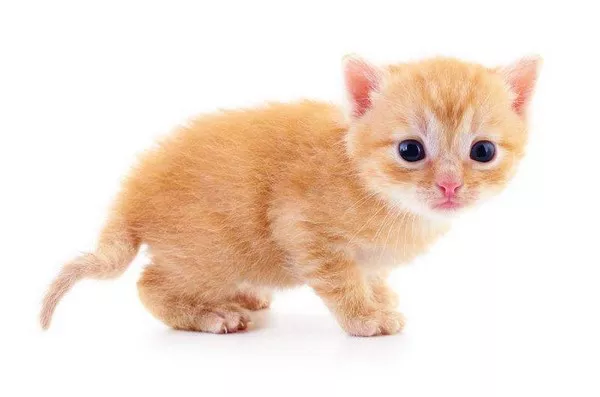Bulldogs, with their distinctive appearance and unique personalities, have long been beloved companions to many. However, despite their charm, owners of Bulldogs often encounter a peculiar issue – the lingering odor that seems to persist even after giving their furry friends a thorough bath. This phenomenon has puzzled many dog enthusiasts and veterinarians alike. In this article, we delve into the underlying reasons behind why Bulldogs tend to emit an unpleasant odor post-bath.
Understanding the Biology of Bulldogs:
Before delving into the specific reasons why Bulldogs may emit an unpleasant odor after a bath, it is essential to understand the biological factors that contribute to this phenomenon. Bulldogs belong to the brachycephalic breed, characterized by their short snouts and compact facial structures. While these features give Bulldogs their distinctive appearance, they also come with certain physiological implications.
One significant factor contributing to the odor issue is the anatomy of Bulldogs’ facial folds. These folds, which are unique to brachycephalic breeds, can create an ideal environment for the accumulation of moisture, dirt, and bacteria. Additionally, Bulldogs are prone to skin fold dermatitis, a condition characterized by inflammation and infection in the skin folds. These factors combined can lead to the development of a persistent odor, even after bathing.
Causes of Post-Bath Odor in Bulldogs:
Several factors contribute to the lingering odor that Bulldogs may emit after a bath. Understanding these factors is crucial for effectively addressing the issue and ensuring the well-being of your pet. Below are some of the primary causes:
Moisture Retention:
Bulldogs’ facial folds and wrinkles are prone to retaining moisture, even after a thorough bath. This trapped moisture creates an ideal breeding ground for bacteria and yeast, which can lead to the development of an unpleasant odor. Despite efforts to dry the folds thoroughly, residual moisture may persist, contributing to the post-bath smell.
Bacterial and Yeast Infections:
The warm, moist environment within Bulldogs’ facial folds provides the perfect conditions for bacterial and yeast overgrowth. These microorganisms can proliferate rapidly, leading to infections that produce foul-smelling discharge. Even after bathing, the underlying infection may persist, causing the odor to linger.
Poor Air Circulation:
Bulldogs’ compact facial structure and deep wrinkles can impede proper air circulation, exacerbating the problem of moisture retention and bacterial proliferation. Limited airflow within the facial folds can prolong drying times and create an environment conducive to odor-causing bacteria.
Inadequate Grooming:
Proper grooming is essential for preventing odor buildup in Bulldogs. However, due to their unique anatomy, reaching and cleaning the deep facial folds can be challenging. Inadequate grooming practices may leave behind residue, debris, and excess oil, contributing to the post-bath odor.
Allergies and Skin Conditions:
Bulldogs are susceptible to various skin conditions and allergies, which can manifest as itching, redness, and inflammation. These underlying skin issues can exacerbate the odor problem, as constant scratching and irritation disrupt the skin barrier, making it more susceptible to infection and odor development.
See Also:American bulldog are they aggressive?
Addressing the Issue:
Effectively addressing the issue of post-bath odor in Bulldogs requires a multifaceted approach that targets the underlying causes. Below are some strategies to help mitigate the problem:
Regular Cleaning and Grooming:
Consistent cleaning and grooming are essential for preventing odor buildup in Bulldogs. Owners should make a concerted effort to clean their pet’s facial folds daily, using a gentle cleanser recommended by their veterinarian. Additionally, regular grooming sessions, including brushing and bathing, can help remove dirt, debris, and excess oil from the coat and skin.
Drying Thoroughly:
Proper drying is crucial after bathing a Bulldog to prevent moisture from accumulating in the facial folds. Owners should use a clean, absorbent towel to carefully dry the folds, paying close attention to ensure thorough drying. In some cases, a low-heat blow dryer on the cool setting can be used to aid in drying without causing discomfort to the dog.
Use of Antimicrobial Products:
In cases where bacterial or yeast infections are present, veterinarians may recommend the use of antimicrobial products to help combat odor-causing microorganisms. These products may include medicated wipes, sprays, or topical treatments formulated to target specific pathogens while maintaining skin health.
Dietary Considerations:
A balanced diet is essential for overall canine health, including skin and coat condition. Owners should ensure that their Bulldogs are receiving a nutritionally complete diet formulated for their specific breed and age. Additionally, incorporating supplements such as omega-3 fatty acids can help support skin health and reduce inflammation, potentially alleviating odor issues.
Veterinary Evaluation:
If despite diligent care, the post-bath odor persists or worsens, it is essential to seek veterinary evaluation. A veterinarian can conduct a thorough examination to identify any underlying health issues contributing to the problem, such as allergies, skin infections, or hormonal imbalances. Based on the diagnosis, appropriate treatment options can be recommended to address the root cause of the odor.
Conclusion:
The lingering odor that Bulldogs may emit after a bath can be a source of frustration for owners, but understanding the underlying causes is the first step towards effective management. By addressing factors such as moisture retention, bacterial overgrowth, grooming practices, and underlying health issues, owners can help mitigate the problem and ensure the well-being of their beloved pets. With proper care and attention, Bulldogs can enjoy a clean, odor-free existence, allowing both them and their owners to fully appreciate the joys of companionship.
Related Topics:





















